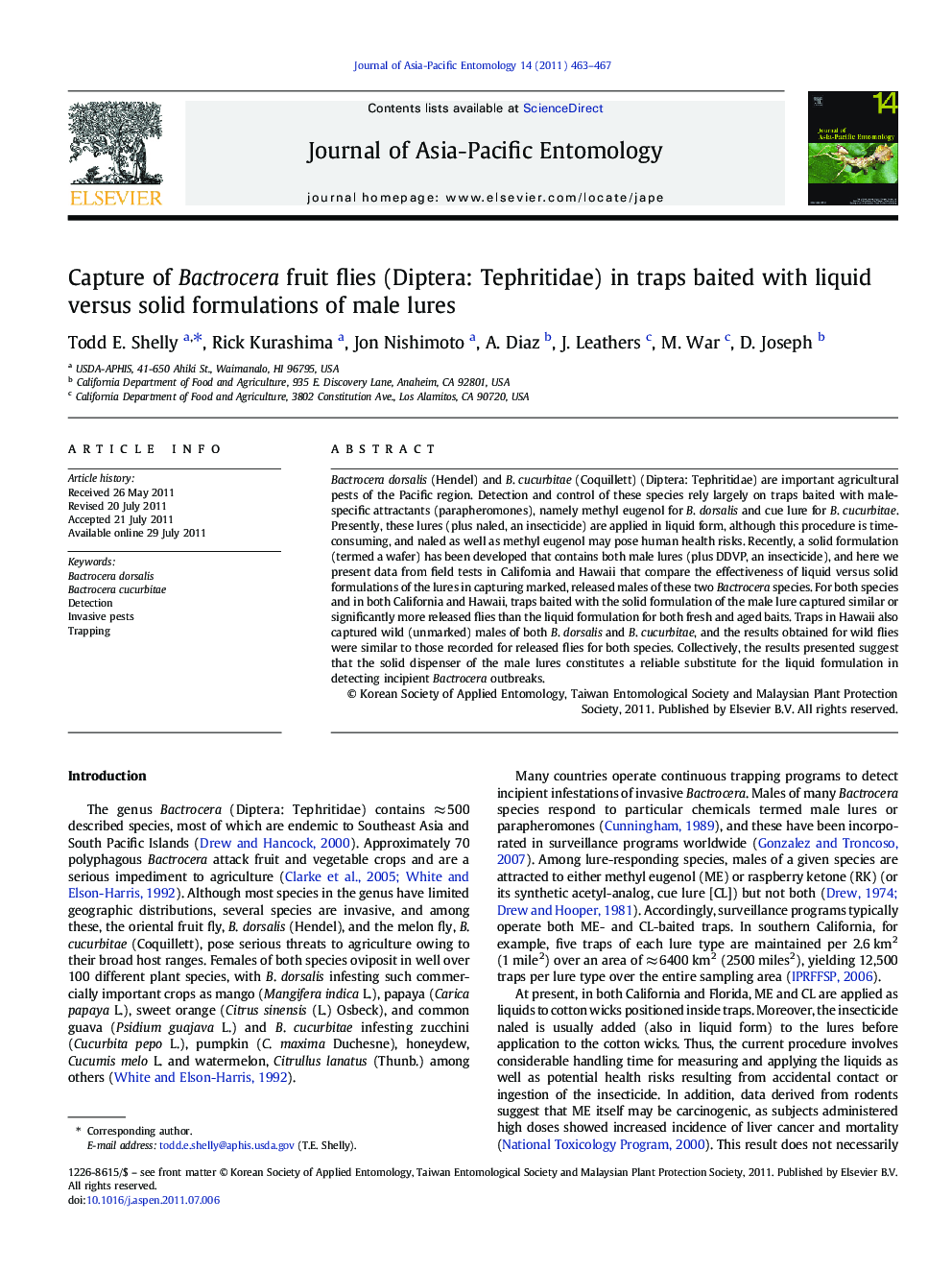| Article ID | Journal | Published Year | Pages | File Type |
|---|---|---|---|---|
| 4524569 | Journal of Asia-Pacific Entomology | 2011 | 5 Pages |
Bactrocera dorsalis (Hendel) and B. cucurbitae (Coquillett) (Diptera: Tephritidae) are important agricultural pests of the Pacific region. Detection and control of these species rely largely on traps baited with male-specific attractants (parapheromones), namely methyl eugenol for B. dorsalis and cue lure for B. cucurbitae. Presently, these lures (plus naled, an insecticide) are applied in liquid form, although this procedure is time-consuming, and naled as well as methyl eugenol may pose human health risks. Recently, a solid formulation (termed a wafer) has been developed that contains both male lures (plus DDVP, an insecticide), and here we present data from field tests in California and Hawaii that compare the effectiveness of liquid versus solid formulations of the lures in capturing marked, released males of these two Bactrocera species. For both species and in both California and Hawaii, traps baited with the solid formulation of the male lure captured similar or significantly more released flies than the liquid formulation for both fresh and aged baits. Traps in Hawaii also captured wild (unmarked) males of both B. dorsalis and B. cucurbitae, and the results obtained for wild flies were similar to those recorded for released flies for both species. Collectively, the results presented suggest that the solid dispenser of the male lures constitutes a reliable substitute for the liquid formulation in detecting incipient Bactrocera outbreaks.
Graphical abstractFigure optionsDownload full-size imageDownload as PowerPoint slideHighlights► Capture of Bactrocera flies was compared using liquid versus solid formulations of male lures. ► Both in California and Hawaii solid formulations captured similar or more flies than the liquid formulations. ► Results indicate that the solid lures may replace the liquid lures, which pose health risks and entail high handling costs.
